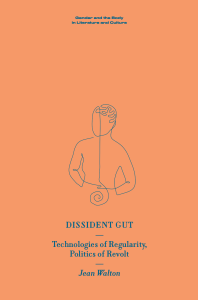Khalil A. Cumberbatch //
More than a year after the coronavirus began extending its deadly reach around the globe, we have begun to take stock of lessons learned. From the proper use of masks to testing standards, social distancing norms, and vaccination distribution, our society has adapted well to the necessary realities of surviving a fast-spreading, highly contagious virus. But while most major sectors in the United States are moving toward some sense of “normalcy,” one—our correctional system—has continued to fall short. This lack of progress has had profound consequences. Studies show COVID-19 deaths and infections in US prisons substantially exceed rates for the general population. Case rates in prison are nearly four times the national rate, while mortality rates are twice that of the general population after adjusting for the age, sex, and race/ethnicity of incarcerated individuals. This national comparison is bad enough, but it conceals significant differences among states. Arkansas, Delaware, Ohio, Oklahoma, and Oregon, for example, experienced prison death rates more than seven times higher than rates for their non-incarcerated residents. Overall, these numbers tell a painful story: the US was not prepared for a health emergency on the scale of COVID-19, and people behind bars paid a heavy price.
As the world’s leading incarcerator, the United States houses approximately 1.8 million men, women, and children in its jails and prisons. That number is staggering, but it’s only the tip of the iceberg. Another 4.5 million people are under some form of community supervision—parole or probation. A complete picture of American correctional control also must include the annual total of almost 11 million jail admissions, part of what the system commonly refers to as “churn.” This dehumanizing term is used to describe the sheer volume of people who flow in and out of jails, as well as the grinding impact the experience leaves on a person’s physical, mental, and emotional state.
At one point in my life, I was one of those people behind bars, so for me, COVID-19’s threat to incarcerated populations is not just a professional interest, but a personal one as well. I know from experience that the structural design of many prisons and jails creates perilous density and other conditions that are optimal for a disease like COVID-19 to spread easily and rapidly. Having served six-and-a-half years in the New York State prison system, I was well aware of the vulnerabilities created by the double-, triple-, and even quadruple-bunked cells and dormitories, the lack of adequate healthcare, the predictable shortages of PPE, and the inability of imprisoned people to practice social distancing or quarantine when ill. Combine that with little to no oversight of correctional systems, and it all added up to ample grounds for concern.
My concerns were quickly confirmed, as news of the pandemic’s toll inside correctional facilities seeped out—first through advocacy organizations and personal contacts inside, and later through the media. Exacerbated by the lack of preparedness of most correctional systems, COVID-19’s impact on detained and incarcerated populations was devastating. In April 2020, for example, New York City’s infamous Rikers Island saw a “public health disaster unfolding before our eyes,” as Chief Physician Ross MacDonald put it. By mid-2020, approximately 60,000 incarcerated people and correctional staff had been infected with COVID-19 at Rikers, and roughly 600 of them had died, according to The Marshall Project’s virus tracker.
Given my personal experience with incarceration, the conditions mentioned by MacDonald and other health officials across the country did not surprise me. I knew the coronavirus would quickly find a toehold behind bars, and I knew thousands of incarcerated individuals would be unable to flee its path.
Unfortunately, my early fears remain just as real today as months have passed, and, despite the efforts of many well-intentioned people in the system, not enough has been done to effectively curb the spread. As of January 2021, approximately 433,000 incarcerated people and staff had tested positive for COVID-19, and at least 1,960 had died, according to the New York Times. The same report identifies the largest outbreaks in the country as those linked to correctional systems, including facilities in Florida, Ohio, Michigan, Texas, and California, where San Quentin Prison experienced the largest reported COVID outbreak, with 25 incarcerated people dead and more than 2,500 staff and incarcerated people infected. While a new analysis has found that states that conducted mass testing in their prisons experienced significantly lower death rates, many states did not embrace that helpful strategy. Given such inconsistencies, advocates continue to believe the COVID-19 case numbers behind bars are much higher than reported.
In response to the unprecedented health emergency, as well as the lack of strong federal leadership on the issue, the Council on Criminal Justice, where I work, launched the National Commission on COVID-19 and Criminal Justice in mid-2020. The purpose of the Commission was to 1) assess the impact of COVID-19 on the criminal justice system; 2) develop priority prevention strategies to minimize the impact of a resurgence or future pandemics; and 3) establish a priority agenda for policy, practice, and research based on the Commission’s conclusions. In December, the Commission released its findings and final recommendations, which covered the four major sectors of the criminal justice system: community, courts, corrections, and policing.
The Commission concluded that the virus “highlighted existing challenges in the criminal justice system while exposing new weaknesses,” and that “the work of reshaping a stronger, healthier, and more equitable criminal justice system must continue.” I could not agree more, and I was gratified to see the Commission’s recommendations create a roadmap toward a stronger, fairer, more resilient system that will better withstand the next public health crisis, placing far fewer people at risk. One key measure proposed by commissioners would reduce the population density behind bars, a factor most responsible for imperiling those incarcerated. The Centers for Disease Control and Prevention made a similar recommendation for other sectors, and it was embraced by the travel industry, restaurants, and other businesses. But while some states took action to limit new prison admissions and release some people a few months early, population reductions were relatively minor. And while jail populations declined an average of 31% early in the pandemic, they soon began to creep back up. Why was progress on reducing density limited and short-lived? I would argue that, despite the relentless efforts of community stakeholders, a firm commitment to minimize risk by thinning incarcerated populations just isn’t there.
In recent weeks, President Biden has launched a renewed and massive effort to administer COVID-19 vaccinations, especially to vulnerable populations. Here again, however, many states have lagged in providing clear plans on how to vaccinate the incarcerated populations under their control—even in light of data showing 1 in 5 people incarcerated had contracted COVID-19. Florida, for instance, had yet to vaccinate a single person in its state prisons as of early April. And in some states, the prioritization of incarcerated people for vaccination has become a political football and the subject of ugly debate.
As our efforts to manage and control COVID-19 begin to sow hope that we will ultimately tame the pandemic, I urge policymakers to remember the vulnerabilities of those behind bars when crafting policies to improve our criminal justice system going forward. I also am mindful of the Commission’s plea that the pandemic be viewed as an opportunity to accelerate long-overdue reforms. As the panel’s final report said: “To do any less, to ignore the lessons learned and return to business as usual, would dishonor the risk, suffering, and trauma experienced by so many over these past months.”
Amen to that.
Author bio: Khalil A. Cumberbatch is Director of Strategic Partnerships, Council on Criminal Justice.


